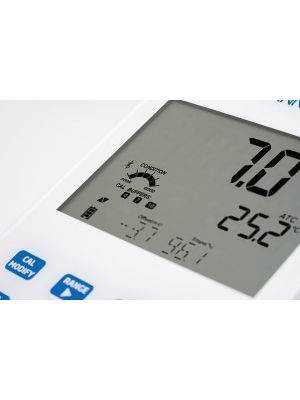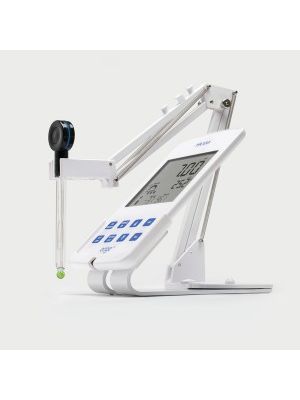HI2202 - pH Meter and HALO™ pH Probe with Bluetooth® Smart Technology - No Cable
Product information "HI2202 - pH Meter and HALO™ pH Probe with Bluetooth® Smart Technology - No Cable"
Bluetooth Smart Technology
HI11102 HALO pH electrode uses Bluetooth Smart Technology (Bluetooth 4.0). This technology offers low power consumption allowing for a long, 500-hour battery life. The range of the Bluetooth connection is 10 meters (33’) between the probe and receiving device.
Auto-Detection
At a push of the button, the HI11102 HALO pH electrode places the probe in discovery mode and will be detected by edgeblu. Once connected, the serial number, calibration information including date, time and buffers used, and the electrode specifications will be loaded into the meter. Having this information stored in the electrode allows for hot swapping to other pH electrodes without recalibrating. The details of the electrode and calibration information are stored with any logged readings.
pH Electrode Design (configurable to other electrode)
The HI11102 HALO pH electrode is a glass body, gel filled, double junction pH electrode that has an indicating probe made with general purpose glass. The glass body is resistant to many chemicals and easy to clean. Being gel filled reduces maintenance since there are no fill solutions to add. The double junction design is suitable for a variety of solutions that can contain substances such as heavy metals or Tris buffer that will cause the silver chloride (AgCl) found in a single junction probe to precipitate and clog the junction. The general purpose glass indicating probe has a temperature range of use from -5.0 to 80.0°C (23.0 to 176.0°F) and for samples that have a 0 to 12 pH.
Built-In Temperature Sensor
The HI11102 HALO pH electrode features a built-in thermistor temperature sensor that is in the tip of the indicating pH electrode. A thermistor temperature sensor provides for a high accuracy temperature reading and should be as close as possible to the indicating pH electrode in order to compensate for the effect that temperature has on the change in resistance of the glass. By having an accurate reading it is possible to provide a temperature compensated reading.



